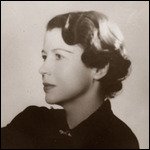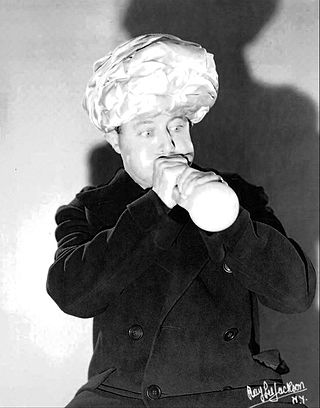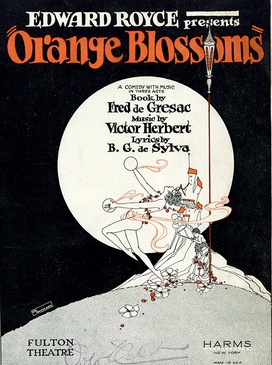
The Band Wagon is a 1953 American musical romantic comedy film directed by Vincente Minnelli, starring Fred Astaire and Cyd Charisse. It tells the story of an aging musical star who hopes a Broadway show will restart his career. However, the play's director wants to make it a pretentious retelling of the Faust legend and brings in a prima ballerina who clashes with the star. Along with Singin' in the Rain (1952), it is regarded as one of the finest Metro-Goldwyn-Mayer musicals, although it was a modest box-office success on first release.

On the Town is a musical with music by Leonard Bernstein and book and lyrics by Betty Comden and Adolph Green, based on Jerome Robbins' idea for his 1944 ballet Fancy Free, which he had set to Bernstein's music. The musical introduced several popular and classic songs, among them "New York, New York", "Lonely Town", "I Can Cook, Too", and "Some Other Time". The story concerns three American sailors on a 24-hour shore leave in New York City during World War II, 1944. Each of the three sailors meets and quickly connects with a woman.

Susan P. Stroman is an American theatre director, choreographer, film director and performer. Her notable theater productions include Oklahoma!, The Music Man, Crazy for You, Contact, The Producers, The Frogs, The Scottsboro Boys, Bullets Over Broadway, POTUS: Or, Behind Every Great Dumbass Are Seven Women Trying to Keep Him Alive, and New York, New York.

Katharine Faulkner "Kay" Swift was an American composer of popular and classical music, the first woman to score a hit musical completely. Written in 1930, the Broadway musical Fine and Dandy includes some of her best known songs; the song “Fine and Dandy” has become a jazz standard. "Can't We Be Friends?" (1929) was her biggest hit song.

The Neil Simon Theatre, originally the Alvin Theatre, is a Broadway theater at 250 West 52nd Street in the Theater District of Midtown Manhattan in New York City. Opened in 1927, the theater was designed by Herbert J. Krapp and was built for Alex A. Aarons and Vinton Freedley. The original name was an amalgamation of Aarons's and Freedley's first names; the theater was renamed for playwright Neil Simon in 1983. The Neil Simon has 1,467 seats across two levels and is operated by the Nederlander Organization. Both the facade and the auditorium interior are New York City landmarks.

Cady Huffman is an American actress.

The August Wilson Theatre is a Broadway theater at 245 West 52nd Street in the Theater District of Midtown Manhattan in New York City. Opened in 1925, the theater was designed by C. Howard Crane and Kenneth Franzheim and was built for the Theatre Guild. It is named for Pulitzer Prize-winning playwright August Wilson (1945–2005). The August Wilson has approximately 1,225 seats across two levels and is operated by Jujamcyn Theaters. The facade is a New York City designated landmark.

The St. James Theatre, originally Erlanger's Theatre, is a Broadway theater at 246 West 44th Street in the Theater District of Midtown Manhattan in New York City. Opened in 1927, it was designed by Warren and Wetmore in a neo-Georgian style and was constructed for A. L. Erlanger. It has 1,709 seats across three levels and is operated by Jujamcyn Theaters. Both the facade and the auditorium interior are New York City landmarks.

The Broadway Theatre is a Broadway theater at 1681 Broadway in the Theater District of Midtown Manhattan in New York City. Opened in 1924, the theater was designed by Eugene De Rosa for Benjamin S. Moss, who originally operated the venue as a movie theater. It has approximately 1,763 seats across two levels and is operated by The Shubert Organization. The Broadway Theatre is one of the few Broadway theaters that is physically on Broadway.
Billion Dollar Baby is a musical with the book and lyrics by Betty Comden and Adolph Green and the score by Morton Gould. Comden and Green were fresh from their success with On the Town, and the production team was something of an On the Town reunion: once again, George Abbott directed and Jerome Robbins choreographed.
Larry Fuller is an American choreographer, theatre director, dancer, and actor. Both a Tony Award and Drama Desk Award nominated choreographer, he best known for his work on Broadway where he notably staged the movement for the original productions of on On the Twentieth Century (1978), Sweeney Todd: The Demon Barber of Fleet Street (1979), Evita (1979), Merrily We Roll Along (1981), Is There Life After High School? (1982), and A Doll's Life (1982).

Joe Cook was an American vaudeville performer. A household name in the 1920s and 1930s, Cook was one of America's most popular entertainers, and he headlined at New York's famed Palace Theatre. After appearing on Broadway he broke into radio.

John Murray Anderson's Almanac is a musical revue, featuring the music of the songwriting team of Richard Adler and Jerry Ross, as well as other composers. It was conceived by John Murray Anderson. An earlier version of the show had been produced in 1929 with the title Murray Anderson's Almanac. The earlier production included Henry Sullivan for composing the music and Noël Coward as part of the script writing team. Sullivan would go on to write music for the 1953 production mentioned here. The full title for the show was John Murray Anderson's Almanac: A Musical Harlequinade.
"Fine and Dandy" is a popular song from the 1930 Broadway musical of the same name.

Lend an Ear is a musical revue with a book, music, and lyrics by Charles Gaynor and additional sketches by Joseph Stein and Will Glickman.

Nell O'Day was an accomplished American equestrian and B-movie actress of the 1930s and 1940s.

Martha Caroline Theresa Lorber was an American dancer, actress, singer, model, and Ziegfeld Girl.

Orange Blossoms is a 1922 musical comedy with music by Victor Herbert, lyrics by Buddy DeSylva, and a book by Fred de Gresac, based on her own 1902 French play La Passerelle which had also been translated and staged on Broadway in 1903 as The Marriage of Kitty.

Jack Whiting was an American actor, singer and dancer whose career ran from the early 1920s through the late 1950s, playing leading men or major supporting figures.

Look, Ma, I'm Dancin’! is a musical comedy in two acts with a book by Jerome Lawrence and Robert E. Lee, and music and lyrics by Hugh Martin. It was produced on Broadway in 1948.

















